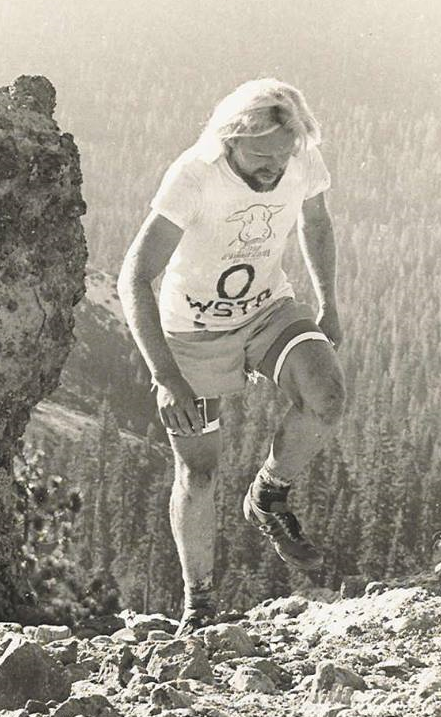
There was a day when your typical ultra distance runner set out with nothing more than a pair of handsome sideburns, short shorts and shabby tennis shoes, drinking from cool mountain streams and drawing sustenance from the California sun. For better or for worse, things have changed a lot since then and your average runner nowadays is more akin to something like a modern-day Robocop. These days we’re guided to our destination by GPS, we wear specialised wicking dri-fit clothes, our trainers are developed in a hi-tech lab and we probably have a team of scientist somewhere working on nutrition schedules and optimal training plans. In fact, running has become big business. Everyone’s trying to sell you something and the choices can be a bewildering. It’s easy to be confused trying to tell proper science from pseudo-nonsence and finding out what works for our own individual style and preferences can prove problematic. This article describes my own particular experience with equipment over five years running and racing in Scotland and Oaxaca. First up, let’s look at running shoes.
Running shoes

Probably the most important part of your kit is the trainers. A bad choice here can send you hobbling home in a matter of minutes. Running shoes can also be expensive and gimmicky so there’s no shortage of punters waiting to sell you the wrong thing. One particular thing to be wary of when buying shoes is not be be misdiagnosed with over or under pronation. Apparently this can be quite common so it’s always best to try more than one store to get a second opinion. Indeed choosing the right store in the first place can be important in itself for a number of reasons. Unless you know exactly what you want you need, I recommend taking a bit of time to speak to other runners to find a quality local shop. I bought my first proper running shoes at Run and Become in Edinburgh. This shop is a bit odd in that it doesn’t have a treadmill but lets you try out shoes by running up and down the road outside. Running in your new trainers is important to make sure they’re comfy and fit your running style. If you feel any discomfort over the 50 meters or so outside the shop, it’s unlikely you could use the shoes for a proper run over 5k or whatever. Another positive thing about this store is that it’s generally busy and doesn’t put any pressure on you to make a purchase. It also supports local races and the staff are generally happy to give advice with regard to injuries, training etc. You can try shoes on in a shop and buy them on-line to save money, but when you find a shop that provides a good service it’s nice to support them with a purchase – at least that means you don’t have to wait around for your shoes to arrive. So, I was happy enough to part with my cash and buy my first Running Shoes, a pair of red Sauconys.
These shoes served me well up until a bit after my first race, when I tried to step my training up for longer distances. With longer runs I found that I would pick up more frequent injuries. These normal hurt my knee and hit about once a month lasting for about week or so. It got to the point were I would panic after feeling the slightest twinge and ended up cutting quite a few long runs short. This was really beginning to effect my enjoyment. At one point I had been waiting more that a week to start back after a sore knee but could only make 500 meters before limping back to the house. This was the last straw. I knew that I had to do something soon or I would be forced to pack it in for good.
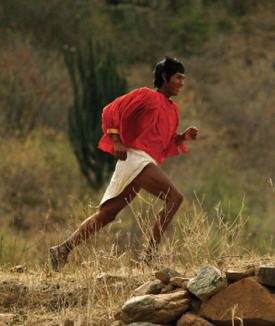
So, I decided to give the barefoot running a go and after more than four years I haven’t looked back. In fact, since switching to minimalist shoes, I haven’t had any sort of running injury at all. I mean, I’ve fallen a few times, grazed my elbow, cut myself on a tree and hurt my foot playing football, but never anything from running that has actually stopped me from running. For me, to go from limping once a month to nothing is pretty amazing. The idea behind barefoot running best described in ‘Born to Run’ by Christopher McDougall. The central thesis of the book is that people are evolved to run without shoes and wearing shoes that impede our natural running style can damage our bodies by forcing us into an unnatural motion. So, if we wear shoes at all we should wear shoes that do as little as possible to alter our natural (barefoot) running style. This normally means using sandals or trainers with very light soles and a near zero-drop (i.e. the heel at the same level as the toe). To me, this makes a lot of sense, and while I wouldn’t like to guarantee it works for everyone, the barefoot running really seemed to work well for me.
My first minimalist shoes were a pair of Nike Free 5.0. I found these shoes to be comfortable and extremely robust. While we’re advised to change running shoes every 400-500k, I normally put in between 60 and 80k a week and I still have my first pair of Frees in relatively good condition. Over time I bought three pairs in total and, although they’re advertised as a road shoe, I use them for training on a variety of surfaces. One minor problem with these shoes off-road is that the groves on the sole can collect stones and mud but this rarely gets bad enough for you to need to stop. Normally picking out the odd stone before a run is enough to keep the shoes in good condition. I’d strongly recommend these shoes for training.
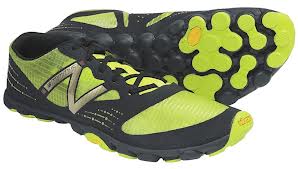
My other shoes are a pair of New Balance Minimalist MT00s with Vibram soles. These are lighter and more flexible than the Nike Frees but not quite so robust. After a few 100k trail running I’ve noticed a bit of wear and tear to the sole, so I mostly save these shoes for racing. I find they work well for road racing and trails but can slip a bit on steep descents. I’ve used them for two 50k and one 80k ultra as well as 2 marathons and numerous 5k and 10k races. My next pair will probably be the MT20s, which are slightly heavier but look a lot more sturdy. I’m also looking for a pair of Vibram five fingers to try out. These are the shoes that look like gloves for your feet and surprisingly they actually have the model in stock in Mexico City, which is generally about 2 or 3 years behind the states for shoes. Unfortunately they don’t have them in my size. In fact, its virtually impossible to find my size of shoe (UK11, US12) in this country for any model without looking on-line, so I’ll have to wait until my next visit to the states to try them on. I also plan to use the road running version of the MT00s, the MR00s, for the next Mexico city marathon if they arrive on time. Fingers crossed.
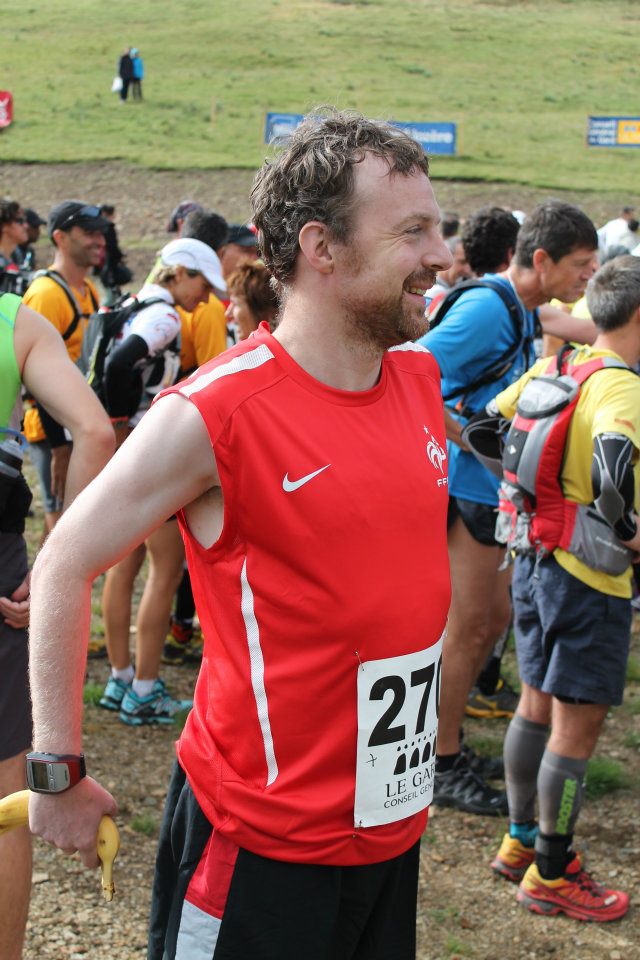
An important point about shoes it that they’re the one piece of equipment you absolutely can’t do without for a race. Think about it, if you lose anything else it’s pretty easy to borrow or improvise a replacement, or just do without. This doesn’t work so well with shoes since they need to be in your size and not every model works for every runner, especially in a race. I learnt this lesson the hard way when my flight was delayed and luggage lost on the way from Paris to New York. This meant I had to miss a 10 mile NYRR race in central park taking place the day after arriving. Luckily, the next time Air France managed to lose my baggage I was prepared with my trainers in my hand luggage and could run the Trail du Mont Aigoual with an emergency kit bought at a local supermarket. Although I probably looked pretty odd lined up at the start with my sleeveless France top and banana, I was able to run the race fine rightly.
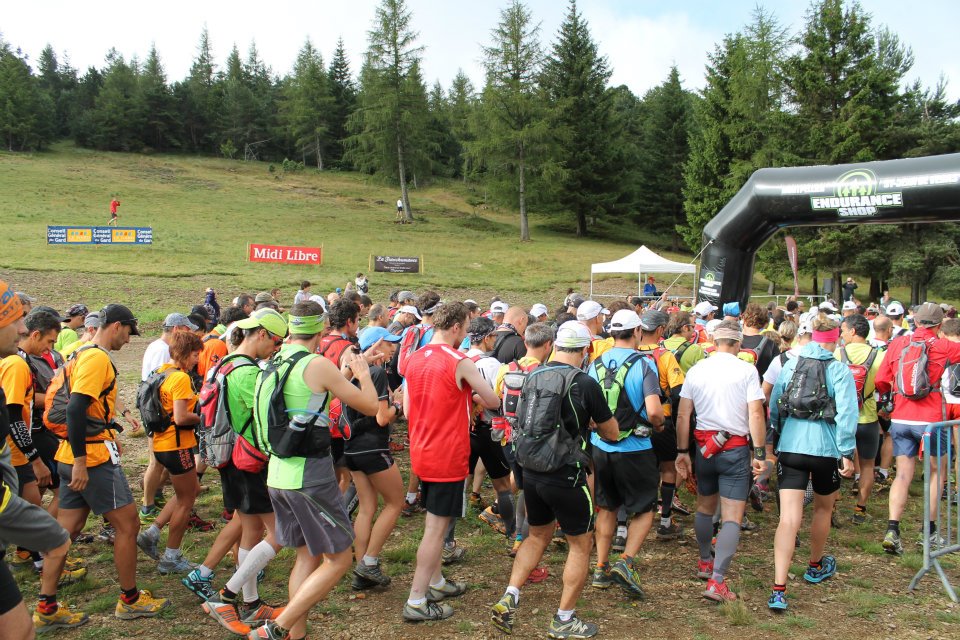
So my recommendations for running shoes are;
- Racing: New Balance Minimalist MT00s
- Training: Nike Free 5.0
- Reading: ‘Born to Run’ by Christopher McDougall
- Shop: Run and Become in Edinburgh
- Advice: Take the shoes in the hand luggage.
Next week, a look at clothes.

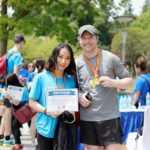


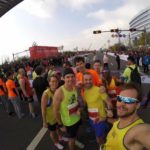
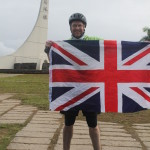
Leave a Reply